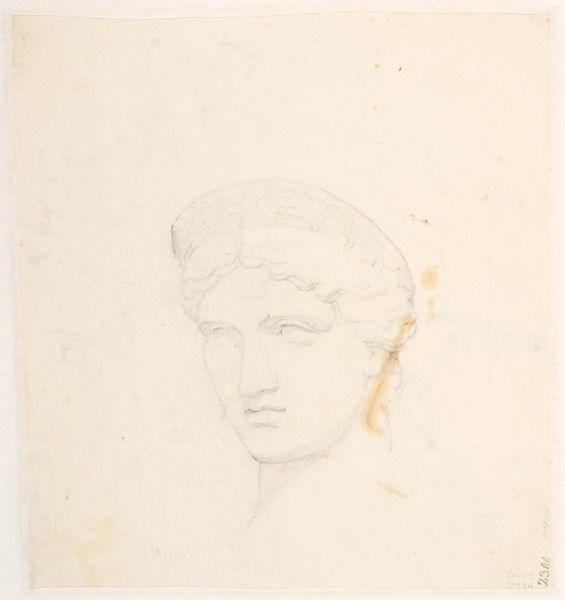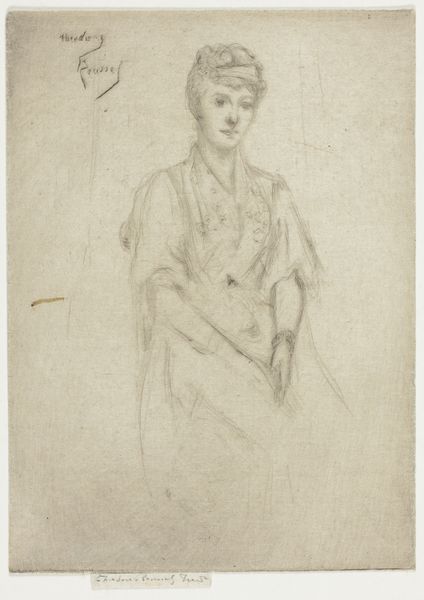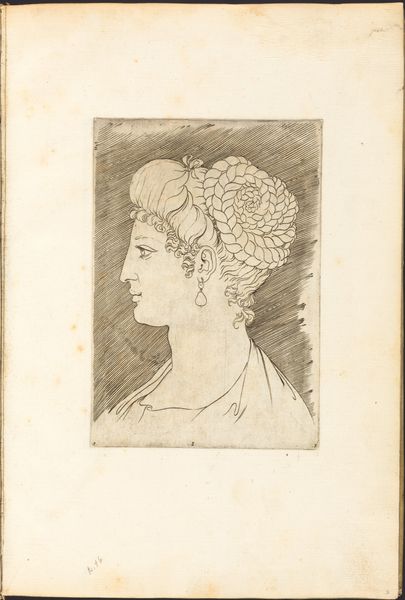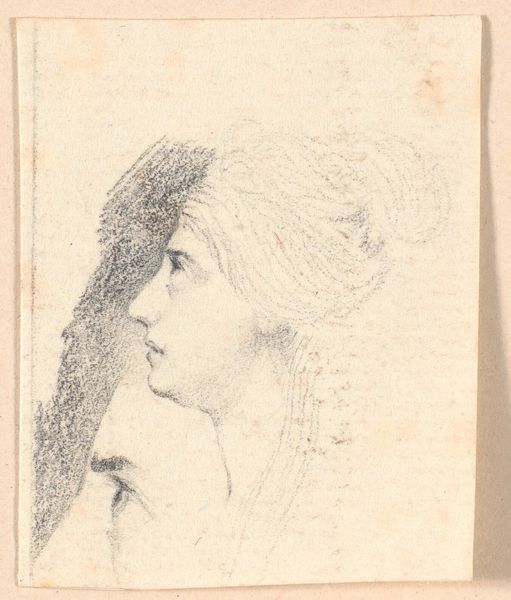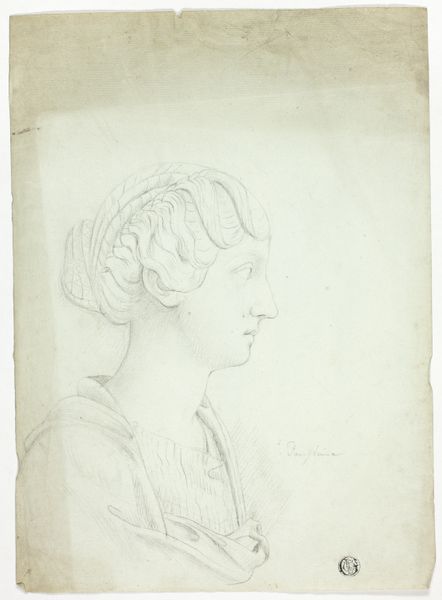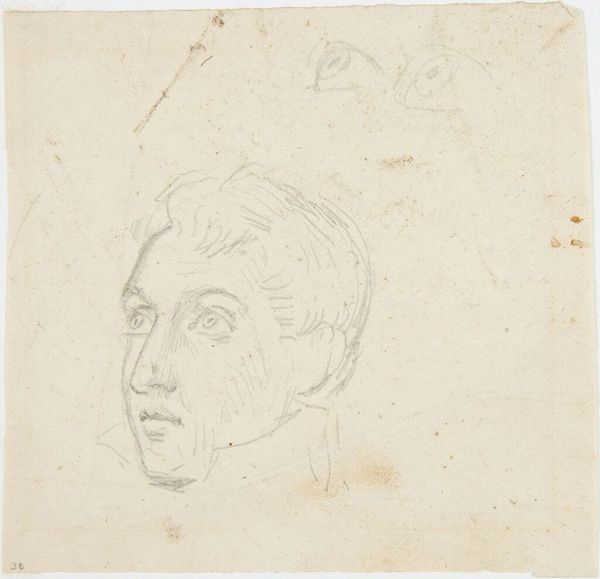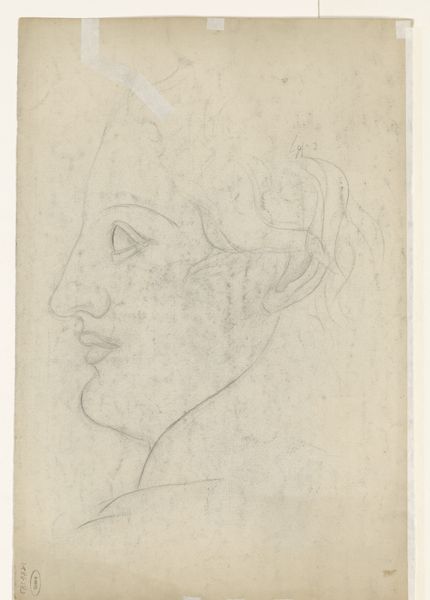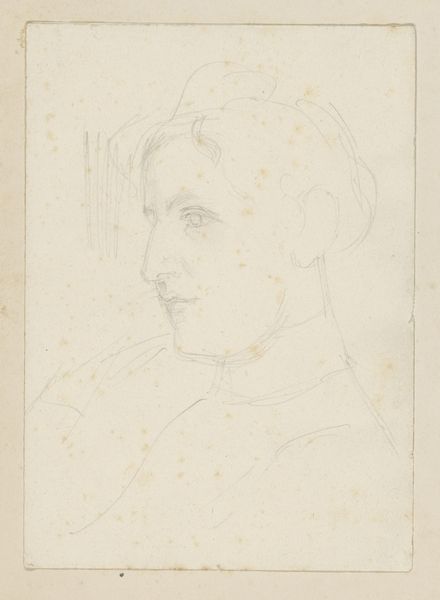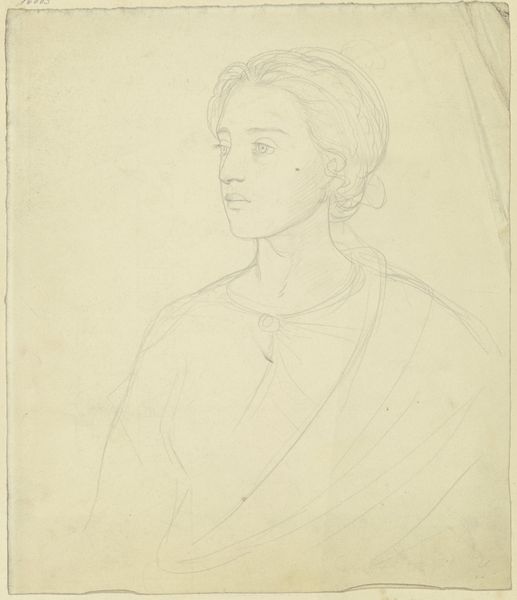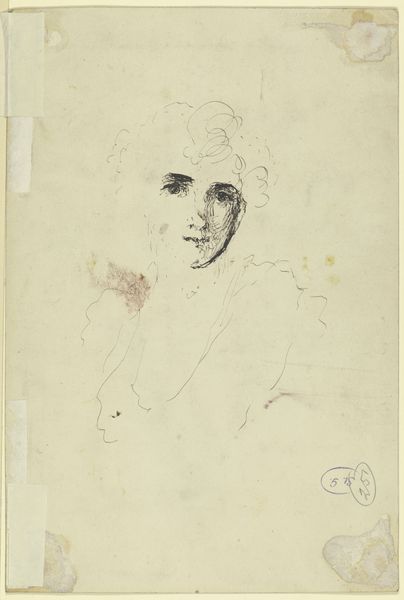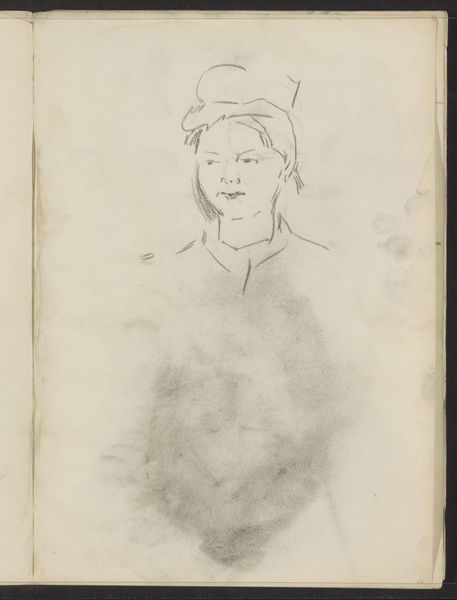
drawing, paper, pencil
portrait
drawing
greek-and-roman-art
classical-realism
figuration
paper
form
ancient-mediterranean
pencil
line
academic-art
Dimensions: 182 mm (height) x 115 mm (width) (bladmaal)
Curator: Before us is Martinus Rørbye's pencil drawing, "Rids af antikt kvindehoved," from around 1825. What are your initial thoughts? Editor: Hauntingly serene. There’s an ethereal quality to this figure, almost as if she's emerging from the paper itself. The delicate lines convey a sense of classical beauty tinged with melancholic stillness. Curator: Rørbye was deeply influenced by the classical revival prevalent in his time. This piece exemplifies academic artistic training, focusing on the precise rendering of form and line, crucial for students in that era. Notice how the medium of pencil on paper underscores its purpose as a study—a working material. Editor: Precisely, the very process Rørbye undertakes to capture an "ideal" beauty demands unpacking! Whose beauty gets preserved through such renderings? We see traces of Western art history asserting itself; this almost ghostlike woman carries immense representational weight that speaks volumes about both power and erasure in shaping beauty standards. Curator: It’s fascinating how a relatively simple medium such as pencil becomes an instrument through which Rørbye engages with classical ideals. There is a stark contrast to the highly polished marble statues of antiquity this work draws from, the rawness of the pencil work feels much more immediate. Editor: And by tracing this image onto paper—rendering the classical head through graphite particles bound by material production processes–Rørbye contributes not merely skill practice; rather they perpetuate systemic biases that uphold "classicism” as somehow superior. Curator: I see your point. Rørbye’s work provides us with insight into 19th century workshop practices and artistic canon formation. By understanding the mechanics through which artworks came into being—from sketchbooks such as these and beyond, perhaps we come better prepared both culturally & materially before aesthetic ideals take root, unexamined elsewhere! Editor: Ultimately, analyzing a sketch such as this makes one acutely aware about legacies encoded from antiquity, especially as art gets instrumentalized shaping our conceptions about aesthetics alongside structures power itself over centuries onwards: truly something impactful consider next seeing.
Comments
No comments
Be the first to comment and join the conversation on the ultimate creative platform.
